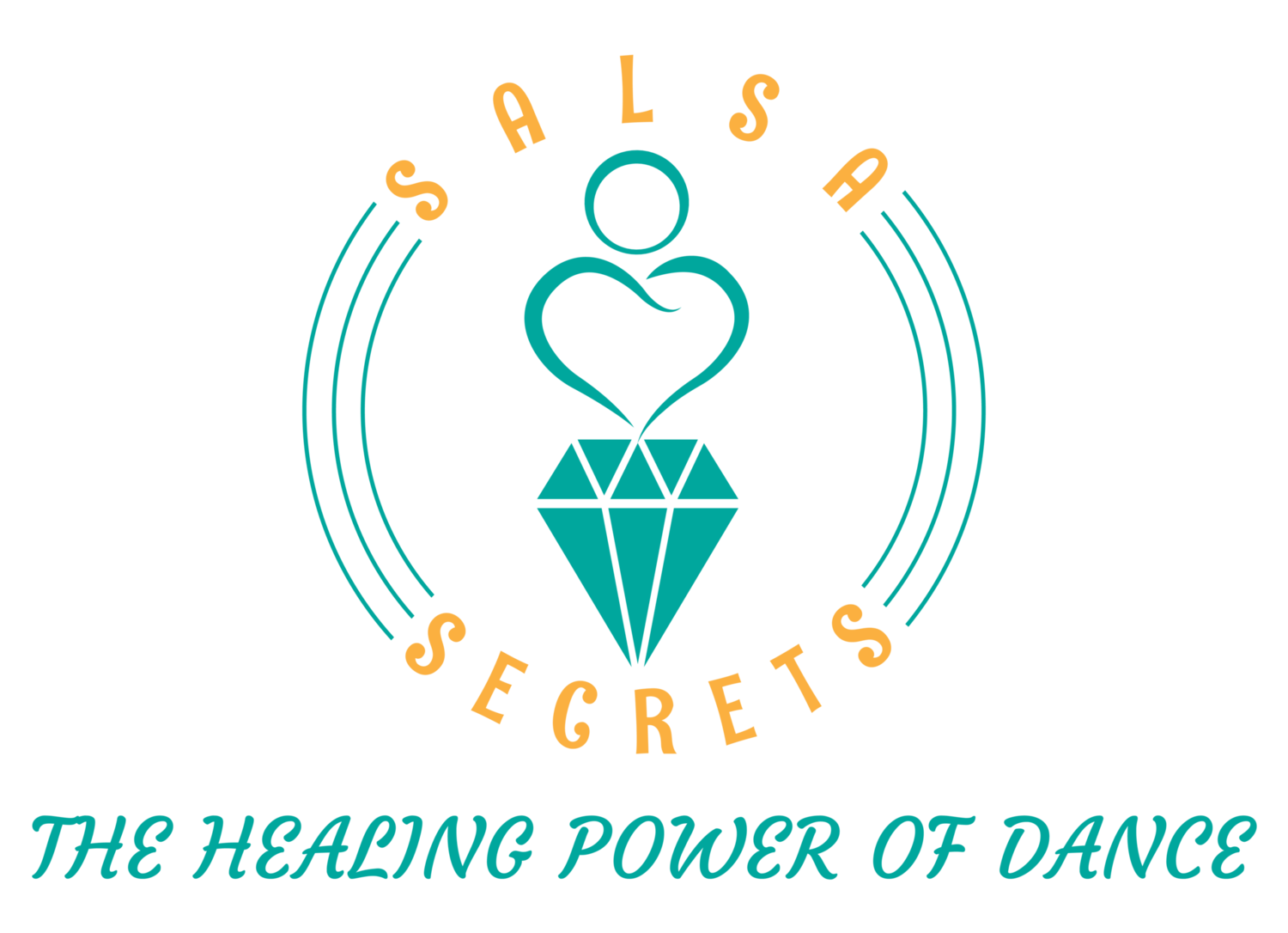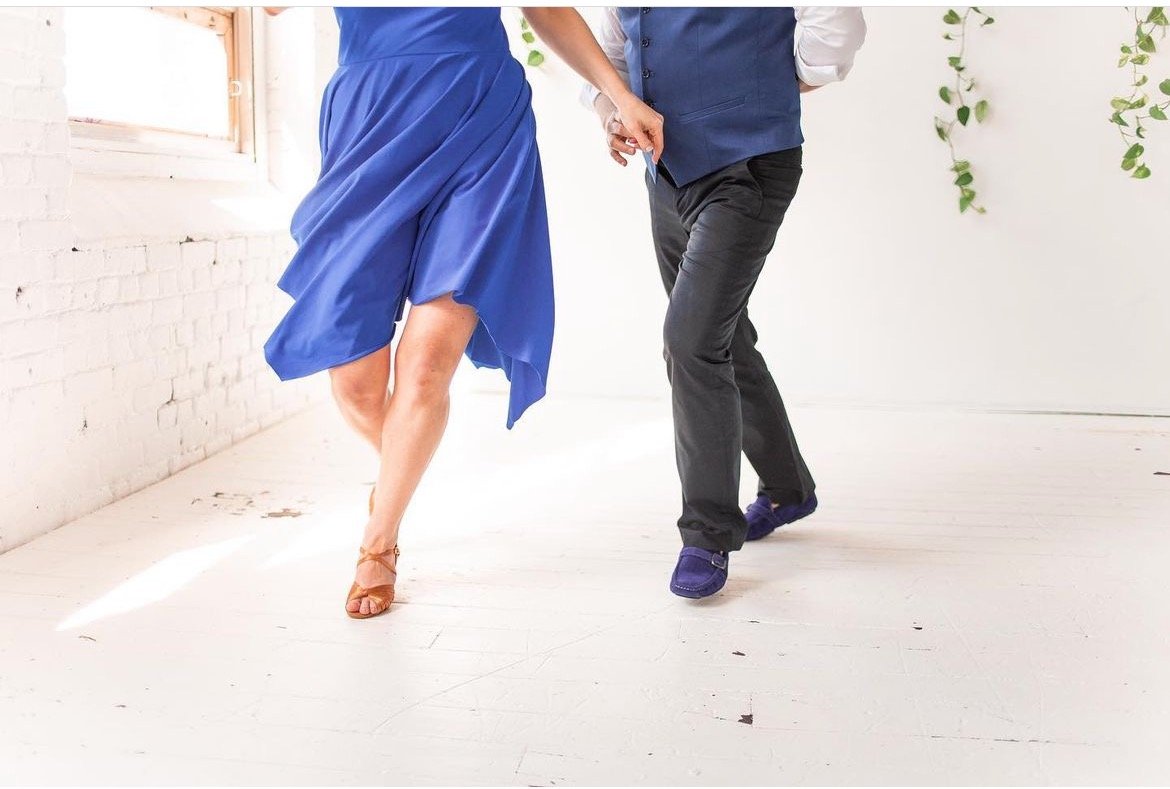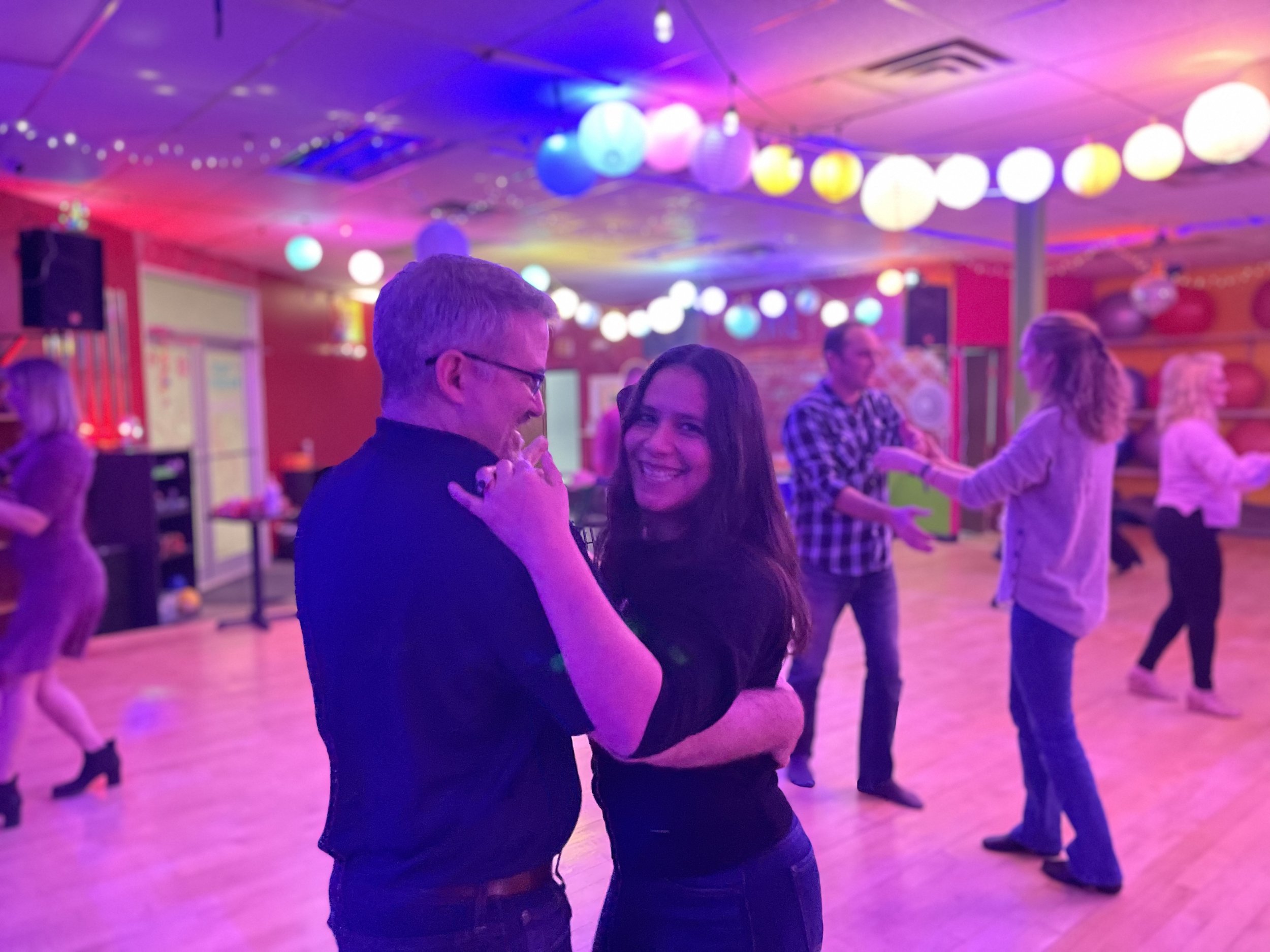Salsa social dancing isn't just about moving your feet to the beat; it offers a wide range of physical, mental, and social benefits that make it a rewarding and enjoyable activity. Whether you're a seasoned dancer or a newcomer to the salsa scene, here are some of the many benefits of salsa social dancing:
Read moreChoreography VS Improvisation
Salsa dance, with its infectious rhythm and vibrant movements, is an art form that has captured the hearts of people around the world. One of the intriguing aspects of salsa is the interplay between choreographed routines and spontaneous improvisation.
Read moreIt's never too late to start dancing: Unlock Your Inner Dancer
When it comes to dancing, the misconception that it's a young person's game couldn't be further from the truth. The beauty of dance lies in its ability to be embraced at any stage of life, regardless of age, background, or experience.
Read moreConsistency is key on the dance floor
Consistency is crucial in dance for several reasons. Let's explore why consistency is important in the context of dance:
Consistent practice is key to improving your dance skills.
By practicing regularly, you reinforce muscle memory, coordination, and technique. Consistency allows you to build upon what you've learned and progress steadily in your dance journey.
Dance requires strength, flexibility, and endurance.
Consistent training helps condition your muscles, increasing their strength and flexibility over time. By regularly engaging in dance exercises and routines, you develop the physical attributes necessary to execute movements with precision and control.
Dance technique is built upon precise movements and body alignment.
Consistency allows you to refine your technique by repeatedly practicing correct form and posture. Through consistent practice, you become more attuned to the nuances of movement, allowing for smoother transitions and improved execution.
Consistency breeds confidence.
Regular practice helps you feel more comfortable with dance movements and routines. This confidence translates into better performance on stage or in social dance settings, as you develop a sense of ease and poise.
Consistent dance practice requires mental engagement and focus.
By committing to regular training sessions, you cultivate discipline, concentration, and mental agility. This helps you stay present in the moment, enabling you to absorb and execute new choreography or dance styles effectively.
Consistency allows you to adapt to different dance styles and choreography more readily.
By consistently exposing yourself to a range of dance genres, you become more versatile and adaptable in your movement vocabulary. This versatility opens up opportunities for collaboration, exploration, and growth as a dancer.
Consistency provides a framework for tracking your progress.
By consistently practicing, you can observe your growth over time, whether it's in terms of technical proficiency, physical fitness, or artistic expression. Tracking your progress reinforces your motivation and encourages continued dedication to your dance journey.
For dancers who aspire to perform, consistency is essential.
Regular practice ensures that you are adequately prepared for performances, allowing you to showcase your skills confidently and deliver captivating performances.
Consistency in dance training helps to prevent injuries.
By consistently conditioning and strengthening your body, you build the necessary strength and resilience to withstand the physical demands of dance. Additionally, consistent practice allows you to develop proper alignment and technique, reducing the risk of injury caused by incorrect movement patterns.
Consistency in dance practice allows for artistic growth and expression.
It enables you to delve deeper into the emotional and artistic aspects of dance, honing your ability to convey stories and evoke emotions through movement.
In summary, consistency is vital in dance as it promotes skill development, muscle conditioning, technique refinement, confidence, mental engagement, adaptability, progress tracking, performance readiness, injury prevention, and artistic development. By committing to regular practice and maintaining consistency, you set yourself up for continuous improvement and a fulfilling dance experience.
I dance, but my partner doesn't...
If you enjoy dancing but your partner doesn't share the same interest, there are still ways to navigate this situation and find a balance that works for both of you. Here are a few suggestions:
It's important to respect and acknowledge that everyone has their own unique interests and preferences.
Accept that dancing may not be your partner's cup of tea and refrain from pressuring or forcing them to dance if they genuinely don't enjoy it.
Look for activities that you both enjoy and can engage in together.
While it may not be dancing, there are likely other shared hobbies or interests that you can pursue as a couple. Explore these activities to maintain a sense of connection and shared experiences.
If dancing is important to you, consider setting aside designated times for your own dance practice or attending dance events/classes without your partner.
This allows you to indulge in your passion while giving your partner space to pursue their own interests.
If your partner is open to it, introduce dance in a non-threatening way.
Start with simple movements or basic dance steps that they can feel comfortable with. Focus on fun and enjoyment rather than formal training or performance. Slowly build up their confidence and allow them to explore dance at their own pace.
Consider attending social dance events together, such as weddings, parties, or community dance gatherings.
These events often have a relaxed and casual atmosphere where people of all skill levels participate. Your partner may feel more comfortable trying some basic steps or freestyle dancing in a social setting.
If there are specific occasions, like your wedding, where you envision having a dance with your partner, discuss possible compromises.
Your partner may be willing to participate in a simple dance or agree to a compromise that involves them being involved in another way, such as announcing the dance or choosing the music.
Remember that dance is not the only way to connect physically with your partner.
Explore other activities that promote physical closeness, such as couples' massages, taking walks together, or learning a different form of partner exercise, like yoga or martial arts.
The key is to find a balance that respects both partners' interests and preferences. Open and honest communication, along with a willingness to compromise, can help you navigate this situation and strengthen your relationship outside of the realm of dance.
We recommend joining us at one of our social dances or date nights. This would be the perfect opportunity to introduce your partner to the idea of dancing and it will be a great time!
Roles: Leader & Follower
In partner dancing, such as ballroom, salsa, or swing, there are typically two roles: the leader and the follower.
Leader
The leader is responsible for guiding the dance and initiating movement. Their main role is to provide clear signals and cues to the follower, allowing them to understand and respond to the intended movements. Key responsibilities of the leader include:
Decides which steps, turns, or patterns to perform, leading the follower through the sequence.
Maintains a solid frame, which involves proper posture, positioning of the arms, and maintaining a physical connection with the follower through handholds or other points of contact.
Establishes the timing and rhythm of the dance, signaling the follower when to start and stop certain movements.
Communicates their intentions through body movement, weight shifts, and subtle cues. Clear communication is essential for a smooth and enjoyable dance experience.
Follower
The follower is responsible for interpreting the leader's signals and responding to them accordingly. They follow the leader's lead, maintaining a connection and allowing the dance to flow smoothly. Key responsibilities of the follower include:
Pays attention to the leader's signals and adjusts their movements accordingly, following the intended steps and patterns.
Maintains a receptive frame and connection with the leader, allowing them to feel and respond to the leader's movements and signals.
Focuses on maintaining their own balance and technique while adapting to the leader's movements.
While following the leader's lead, the follower can add their own styling and interpretation to the dance, expressing the music and adding their unique flair.
It's important to note that while these roles provide a general framework for partner dancing, there can be variations and moments of shared responsibility. Partner dancing is a collaborative effort, and good communication and synergy between the leader and follower are key to creating a harmonious dance experience. Both roles require active engagement, trust, and mutual respect to create a seamless and enjoyable dance partnership.
Let your dance partnership flourish as you join us for one of classes at Salsa Secrets!
Two Left Feet
Having "two left feet" is a common expression used to describe feeling uncoordinated or inexperienced in dancing. However, don't let that discourage you! Here are a few tips to overcome that feeling and improve your dancing skills:
Enroll in beginner dance lessons specifically designed for individuals with little or no dance experience. These classes will focus on teaching you the basics, fundamental techniques, and building your confidence on the dance floor. Dance instructors are trained to work with beginners and create a supportive and encouraging learning environment.
Like any skill, dancing requires practice to improve. Set aside dedicated time to practice the steps and movements you've learned in class. Consistency is key, so aim to practice a few times a week. Practice will help you become more comfortable with the movements, improve your muscle memory, and gradually enhance your coordination.
Mastering the basics is essential to building a strong foundation in dance. Take your time to understand and practice basic steps, footwork, and body movements. Once you feel comfortable with the fundamentals, you can progress to more complex patterns and styles.
Everyone makes mistakes while learning to dance, and that's perfectly normal. Instead of getting discouraged, embrace your mistakes as opportunities for growth. Learn from them, laugh them off, and keep going. Remember that dancing is about having fun and expressing yourself, so don't let small missteps hinder your enjoyment.
Surround yourself with a supportive dance community that encourages and uplifts you. Join social dance events, clubs, or online communities where you can meet fellow dancers who share similar experiences. Dancing with others and receiving positive feedback and encouragement will boost your confidence and motivate you to continue improving.
If you feel like you need more personalized attention or want to accelerate your progress, consider taking private dance lessons. Private lessons allow you to work one-on-one with an instructor who can tailor the lessons to your specific needs, focusing on areas that require more attention and providing individualized feedback and guidance.
Remember that learning to dance is a journey, and it should be enjoyable. Don't put too much pressure on yourself to become a perfect dancer overnight. Embrace the learning process, celebrate your progress, and focus on the joy and self-expression that dancing brings.
With time, practice, and a positive mindset, you can overcome the feeling of having "two left feet" and develop your dancing skills. Be patient with yourself, have fun, and soon you'll find yourself dancing with confidence and grace.
10 Reasons to Start Dancing Now!
Dancing is not only a fun and enjoyable activity but also offers a wide range of benefits for both physical and mental well-being. Here are the top 10 reasons you should consider starting dancing:
Dancing is a fantastic way to improve your overall fitness. It offers a complete body workout, helping you improve cardiovascular health, endurance, strength, flexibility, and coordination.
Dancing provides a release from daily stress and helps you unwind. The rhythmic movements and music can elevate your mood, reduce anxiety, and promote relaxation.
Dancing is a social activity that allows you to meet new people and form connections. Whether it's group classes, social dances, or performances, dancing provides opportunities to interact and build relationships with others who share a common interest.
As you learn new dance steps and improve your skills, you'll gain confidence in yourself and your abilities. Dancing allows you to express yourself creatively and develop a sense of self-assurance.
Dance is a powerful form of self-expression. It allows you to convey emotions, tell stories, and communicate without words. Through dance, you can explore your creativity and develop a unique artistic voice.
Dancing requires mental engagement and quick decision-making. Learning choreography, remembering sequences, and coordinating movements improve cognitive functions, including memory, focus, and mental agility.
Dance promotes proper posture and body alignment. By practicing dance techniques, you become more aware of your body and develop better control, balance, and grace in your movements.
Dancing exposes you to different styles and cultures. Whether it's salsa, tango, ballet, or hip-hop, each dance form has its own history, traditions, and cultural significance. Engaging in dance allows you to appreciate and learn about diverse cultures.
Dancing is inherently enjoyable. It brings a sense of joy, excitement, and happiness. Whether you're dancing alone in your room or performing on a stage, the sheer pleasure of moving to the music is a reward in itself.
Dance is a lifelong journey of learning and growth. There are always new steps to master, choreographies to explore, and styles to delve into. Dancing keeps your mind engaged and provides a continuous opportunity for personal development.
Remember, you don't have to be a professional dancer to experience the benefits of dance. Whether you're a beginner or an experienced dancer, starting to dance can enrich your life in numerous ways and bring a whole new level of joy and fulfillment. So, put on your dancing shoes and join us at Salsa Secrets where we will let the rhythm guide you to a world of movement and self-discovery!
Benefits of Dance
Dance is not only a form of art but also a form of exercise. It is a great way to engage in physical activity while having fun. Dance has numerous benefits for people of all ages, genders, and abilities. Here are some of the benefits of dance:
Improves physical fitness
Dancing involves movement of the entire body, which helps increase flexibility, strength, and stamina. Regular dance practice can help improve cardiovascular health, reduce blood pressure, and improve overall fitness levels.
Boosts self-confidence
Dancing can help boost self-confidence and self-esteem. Learning new dance routines and choreography as well as dancing with and performing in front of others can help people feel more confident, especially if they receive positive feedback and encouragement.
Relieves stress
Dancing is a great way to release tension, stress, anxiety and built up energy, which can help people feel more relaxed and calm. Dancing is also a form of expression, allowing people to express their emotions and feelings through movement.
Improves social opportunities
Dancing is a social activity, and it can help provide a sense of community. Dancing with others can help people develop teamwork, communication, and leadership skills. Dancing is a great way to make new friends.
Enhances cognitive function
Dancing requires focus and concentration, which can help improve memory and mental agility. Dancing also stimulates the brain, which can help improve cognitive function and reduce the risk of cognitive decline.
Promotes creativity
Dancing is a form of creative expression. It allows people to express themselves through movement and can help promote creativity and imagination. Dancing can also inspire people to explore other forms of art and creativity.
In conclusion, dance is a great way to engage in physical activity while having fun. It has numerous benefits for people of all ages, genders, and abilities. Whether you are looking to improve physical fitness, boost self-confidence, relieve stress, improve social skills, enhance cognitive function, or promote creativity, dance is a great way to achieve these goals.
At Salsa Secrets, we use dance as a tool for overall health and wellbeing enhancement. We accepts students of all ages, abilities and levels of dance. This creates a safe environment for everyone to work on their own goals and desires while being in community together.








